Kerala Kalam, "Draw and sing the paintings" — part 1
Almost invisibles, the floor paintings called kalam do not expose themselves to the morning walker's gaze. They are drawn in privacy and focus the attention of the family within the home and of devotees in the temple premises.
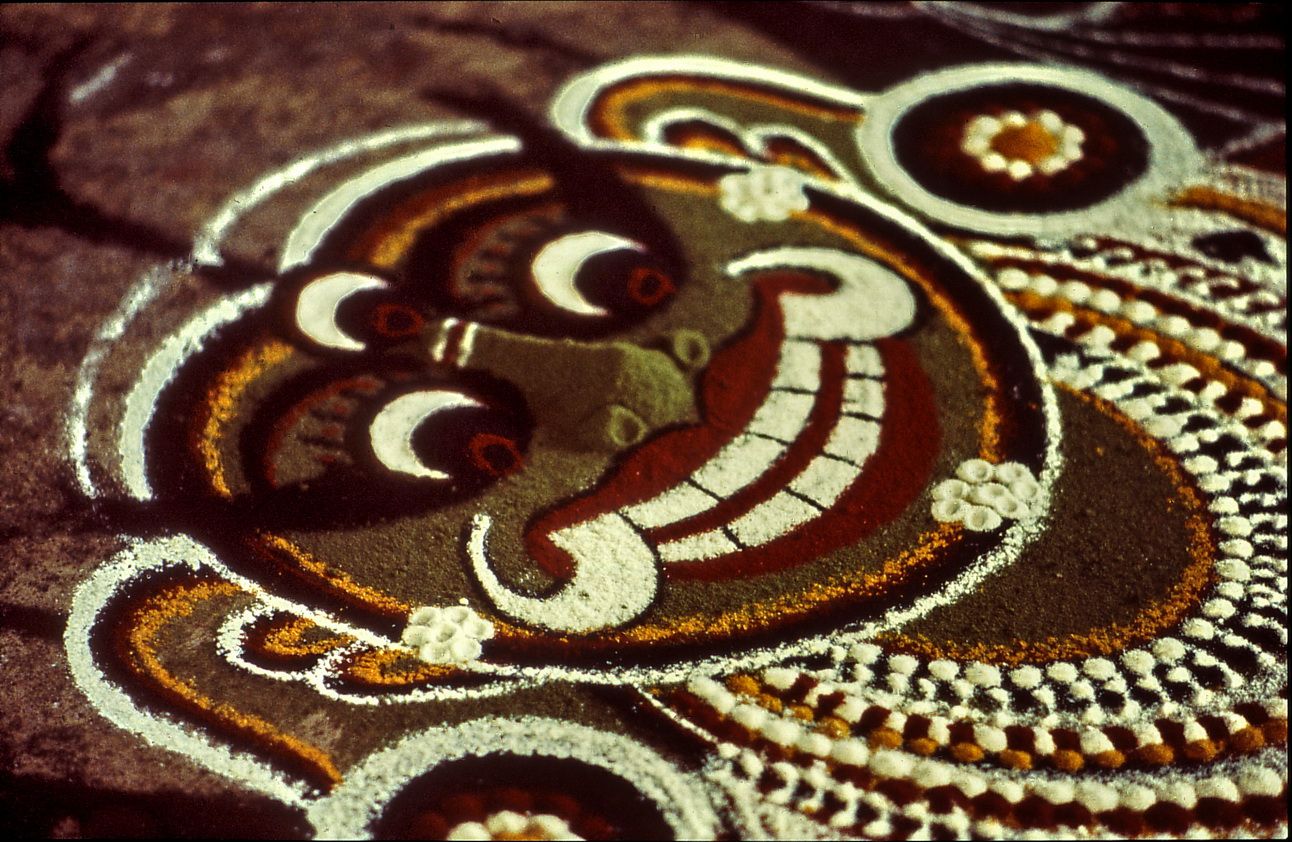
Kerala, more than any other state in India has numerous communities of “ritual painters” and ceremonies associated with ephemeral paintings. This part of South India displays a surprising creative graphical palette, from domestic decorations during Onam festivities to polychromatic, geometrical, and anthropomorphic paintings drawn by specialists. In Malayalam, the paintings as well as the ceremony are known as Kalamezhuttu, which is best transcribed in English as Kalam Eluttum, literally "writing, drawing on the threshing yard" or Kalam Eluttum Pattum (to draw and sing the kalam). They are often anthropomorphic images and the officiating painter embodies the divine who may be experienced through sight and touch. Almost invisible, the kalam are not conspicuous to the morning walker’s gaze. They are drawn in privacy and focus the attention of the family within the home, and of devotees in temple premises.
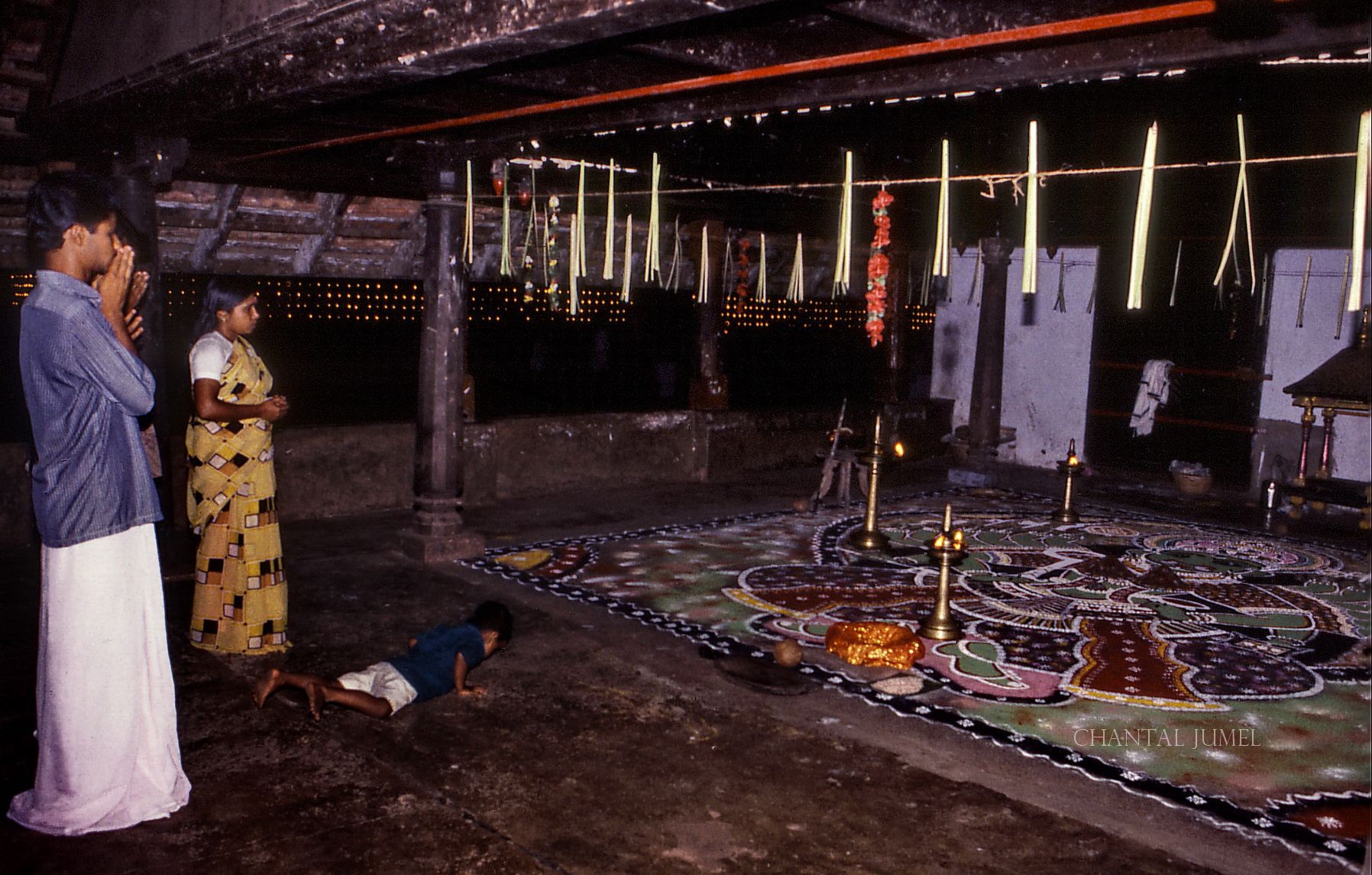
The paintings featuring deities by means of vegetable colours are laid directly on the ground and provide support to ceremonies in homage to Bhadrakali, to Ayyappan the Lord of Sabarimala and to the serpent-gods. They are also an essential element to rituals addressing village or minor deities such as Kâma, Gandharva, Yaksha, Yakshi, and dark entities. They represent the obscure side of human life opposing health to diseases, fertility to barrenness, pregnancy to miscarriage, and still born infants. Similarly the kalam are drawn for therapeutic purposes because in a villager’s mind, epidemics, diseases, the death of cattle, and bad harvests are attributed to the gods or bad spirits. In order to please the deities and to appease their wrath; they have to be cajoled or destructed by means of incantations, songs, and mudra (symbolic gestures of the hands). Beyond the aesthetic appeal, the world of kalam offers a comprehensive insight into adornment and prosperity rituals and provides invaluable material on indigenous systems of medicine, on colours, on hand techniques, on traditional measurements and proportions in the drawing of divinities.
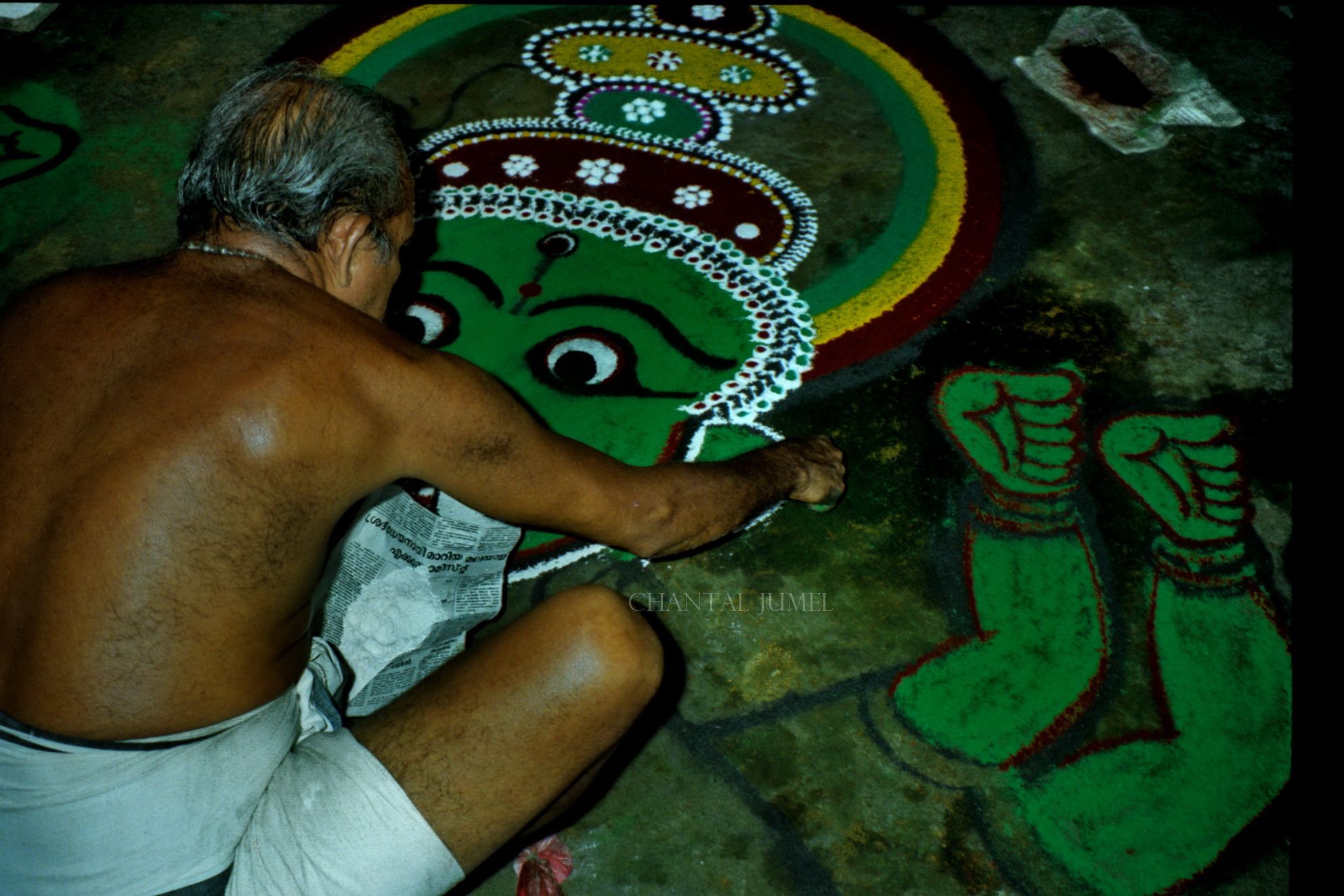

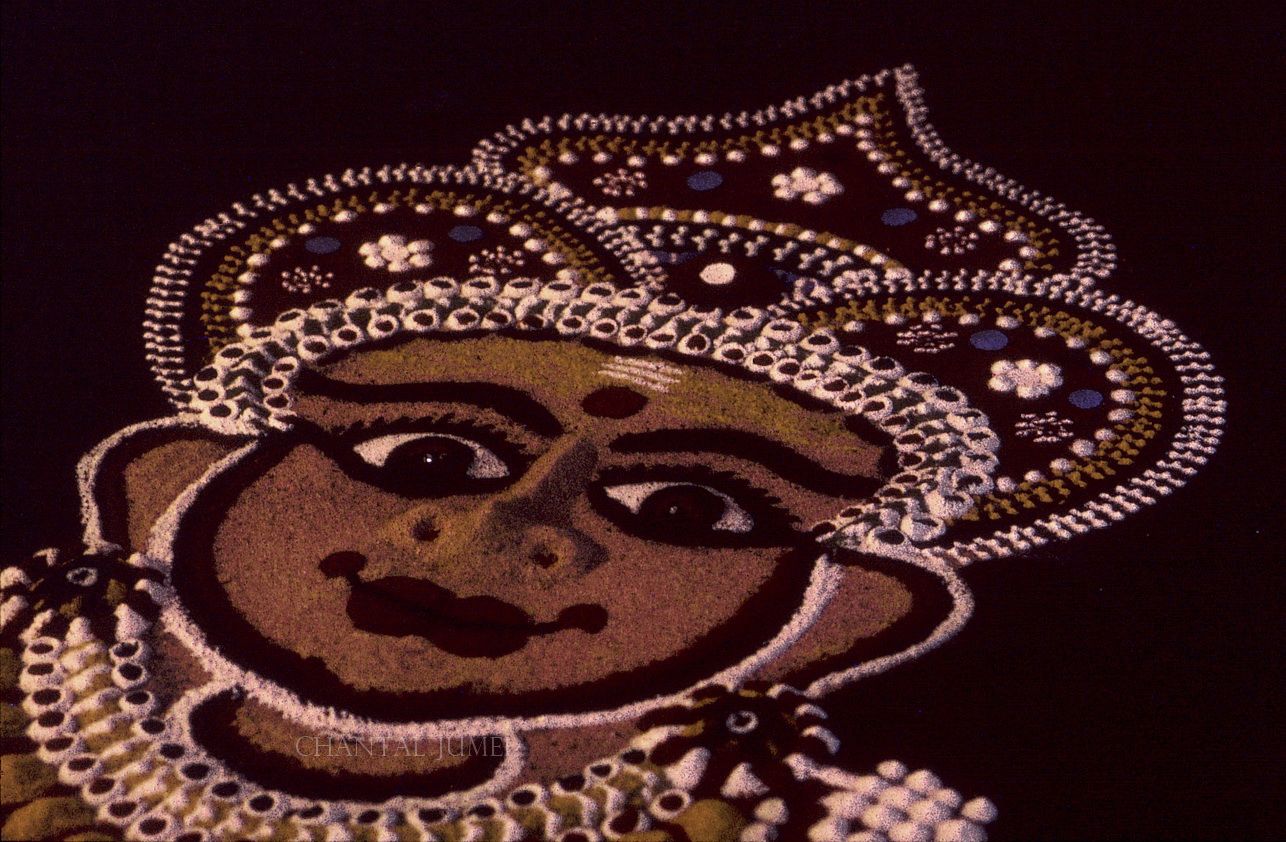

A multitude of specialists
Communities attached to those rituals are holding various positions. They are alternately painters, priests, healers, musicians, dancers, and actors. The "ritual painter" is believed to be closely connected to the powers imparting life and death. He knows magic formulae to address deities and to submit requests to them. Health and longevity, numerous offspring, fame and material benefits are among the more common wishes communicated to the deities. The ritual painter converses with ancestors and subdues wandering spirits. He repels the graha or "grabbing" spirits causing miscarriage in women and commands Gandharva to withdraw from the bodies of young girls. Sometimes he calls the demons by their names; he knows how to talk to animals, snakes and birds of ill omen.
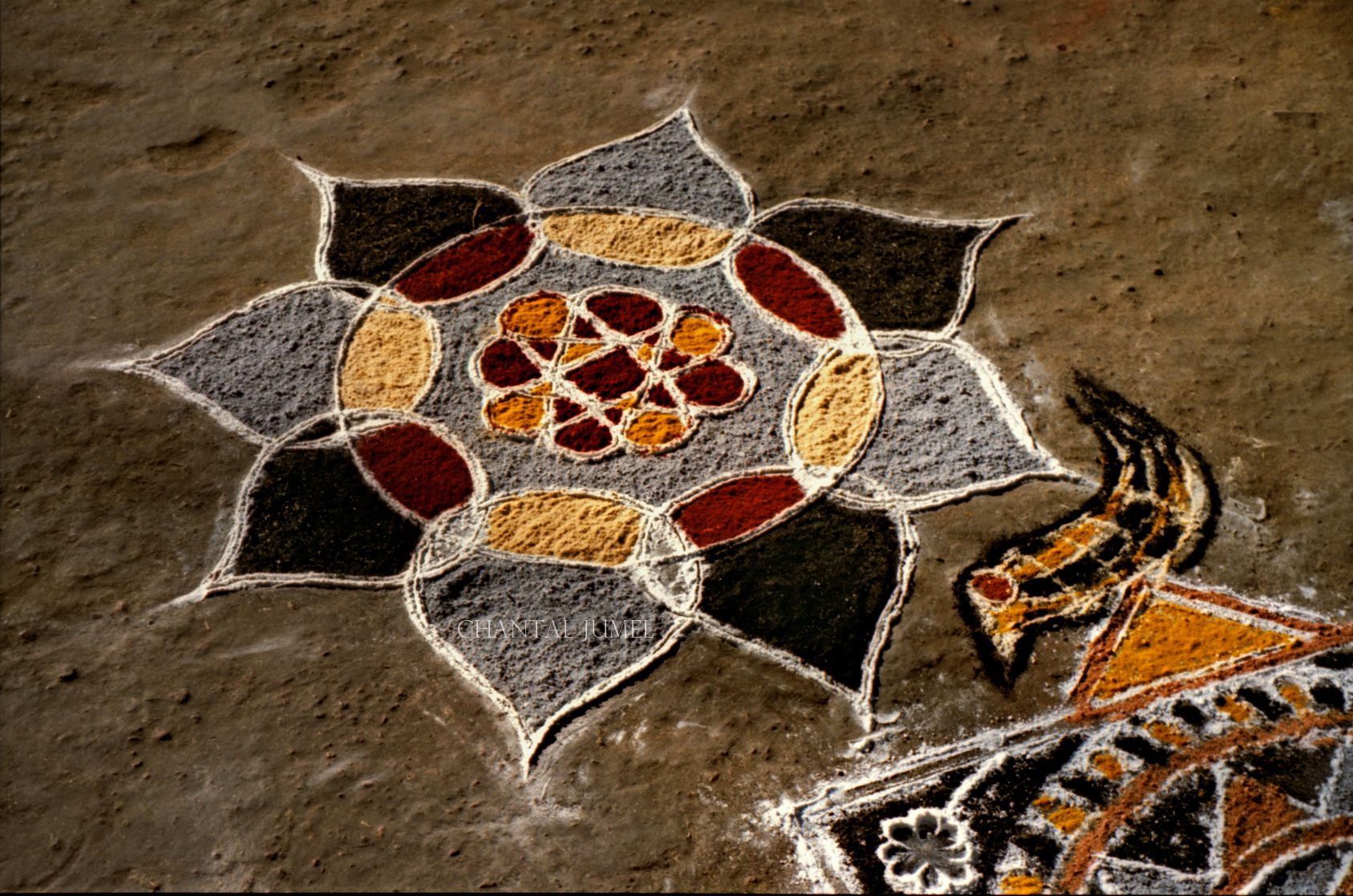
He blesses the embryo in the womb, the new-born child and the mother. He revives men’s virility and knows magical spells to make women fecund. He recites the charms to destroy larvae, insects and rodents and commends the five elements: ether, wind, fire, water and earth. He restores health and if somebody is possessed, he falls into a trance and fights the demon until the latter leaves his victim. He knows every remedy and recommends decoctions and various oils to the patients. He masters choreographies and the most complex rhythms and narrates epics through mudra or symbolic gestures of the hands. The accompanying songs are a priceless source of regional, linguistic, and poetical forms. The dance patterns combined with theatrical features take us to the genesis of many Kerala dance-dramas such as Kathakali.
The article is a translated excerpt from my book : "Kolam et Kalam, peintures rituelles éphémères de l'Inde du Sud", Editions Geuthner, Paris 2010.
- A kalam : "A threshing floor place levelled to spread grains etc...for drying, a place, a floor, a yard, an open spot, a square, a barn, a battlefield, any field for contest, drawing of tantric designs or figures on the ground with indigenous colours, the ground prepared for sorcery.."
Madhavan Pillai, Malayalam English dictionary, Sahitya Pravarthaka Kottayam, First published, 1976.
